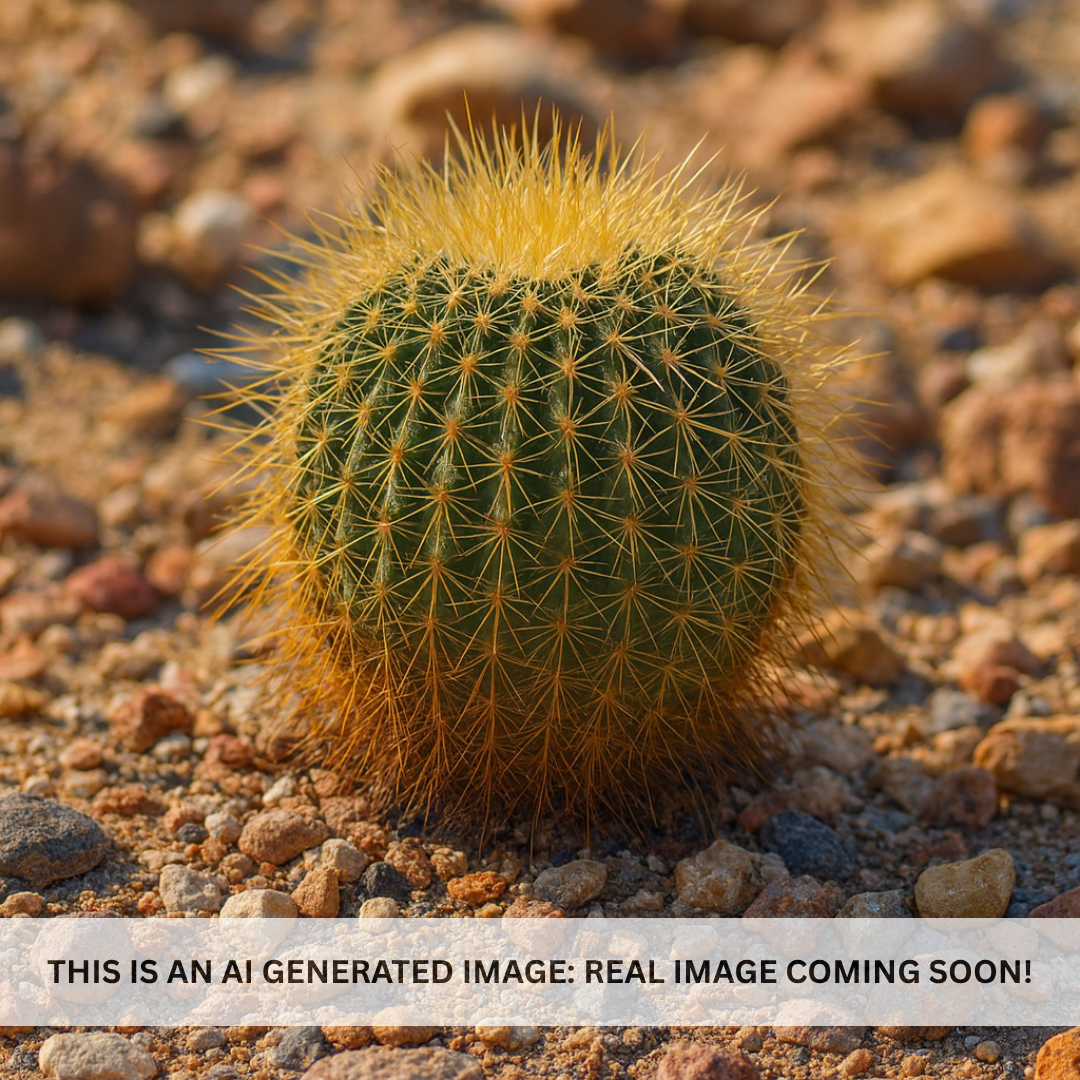My Store
Gold - Mammillaria pringlii
Gold - Mammillaria pringlii
Couldn't load pickup availability
Plant Type: perennial, clustering cactus
Plant Height: 6–10 inches (up to 12 inches with age)
Spread: 8–15 inches (expands through offsetting)
Flower Color: golden yellow
Sun Exposure: Full sun, Partial Shade
Gold / Mammillaria pringlei: A Golden-Spined Desert Jewel for Sunlit Landscapes
Mammillaria pringlei, commonly called the Golden Pincushion Cactus, is a luminous and resilient species native to the dry slopes of Mexico’s Sonoran region. Its radiant golden spines, compact spherical form, and bright yellow blooms make it a brilliant accent for Arizona gardens. Highly drought-tolerant and easy to grow, this species embodies everything that makes desert cacti so visually compelling—order, contrast, and year-round resilience.
Key Features of Mammillaria pringlei
This small to medium-sized cactus forms rounded to short cylindrical stems about 3–4 inches wide, covered in rows of tubercles arranged in perfect spirals. Each areole produces numerous golden-yellow radial spines and several longer central spines that deepen in color toward the tips, giving the plant a glowing appearance in sunlight. As it matures, M. pringlei produces clusters of offsets, forming tight, rounded colonies. In late spring or early summer, a ring of bright yellow, funnel-shaped flowers encircles the crown, creating a stunning halo effect that lasts for weeks. The flowers are often followed by small red seed pods that add further visual interest.
Growing and Care Tips
Mammillaria pringlei thrives in full sun and well-draining, sandy or rocky soil. In the Phoenix Valley, it flourishes in full morning and midday sun, tolerating reflected heat exceptionally well. It prefers to dry completely between waterings and is highly sensitive to overwatering or poor drainage. Once established, it requires minimal irrigation and is cold-hardy down to around 25°F with protection. Plant in mounds, rock gardens, or containers with excellent airflow to replicate its native desert environment. It’s slow-growing but highly rewarding, forming dense, glowing clusters that brighten any desert garden.
Landscaping Uses
The Golden Pincushion is a superb choice for foreground plantings, rock gardens, and container arrangements. Its radiant color contrasts beautifully with blue- and gray-toned plants like Blue Elf Aloe, Agave parryi, and Totem Pole Cactus. It softens the base of larger architectural plants and adds detail to minimalist or naturalistic desert landscapes. When planted en masse, Mammillaria pringlei creates a golden tapestry that glows under Arizona sunlight.
Summary
Mammillaria pringlei (Gold) is a compact yet radiant desert cactus that brings brightness and warmth to any setting. With its sunlit spines, perfect form, and effortless drought tolerance, it’s a living gemstone of the desert—small in size but massive in visual impact. Low-maintenance and enduring, it’s ideal for homeowners and collectors seeking color and texture that thrive under the Arizona sun.
Three Timbers Installation Guide (Feel Free to Follow):
Mammillaria pringlei Planting Guide:
Location: Full sun to partial shade; ensure at least 6 hours of direct light daily. Light afternoon shade during peak summer can preserve color and prevent stress in new plants.
Soil: Use a sharply draining cactus or succulent mix combined with sand, pumice, or decomposed granite. Avoid organic or clay-heavy soils.
Spacing: Allow 8–12 inches between plants for offset growth and airflow.
Planting Depth: Keep the crown level with the soil surface; avoid burying the base or tubercles.
Support: Not required; dense clustering ensures natural stability.
Watering Guide:
Watering After Planting: Water thoroughly once after installation to settle the soil. Then allow soil to dry completely before watering again. During establishment (first 2–3 months), water every 14–20 days depending on temperature and drainage.
When is the Plant Established? Mammillaria pringlei is considered established after 6 months, once new offsets form and the plant blooms consistently.
Watering Once Established: Water every 4–5 weeks during hot, dry months. Withhold water entirely during winter dormancy unless shriveling occurs.
Drip Irrigation Setup: Use one low-flow emitter (0.5 gallon per hour) about 4–6 inches from the base. Run infrequently and only long enough to soak the soil deeply.
General Watering Tips: Always confirm that the soil is completely dry before watering again. Overwatering leads to rot and spine discoloration. A top layer of decomposed granite or small gravel enhances drainage, regulates temperature, and highlights the cactus’s golden spines—keep it a few inches from the base for airflow and long-term plant health.
Share














